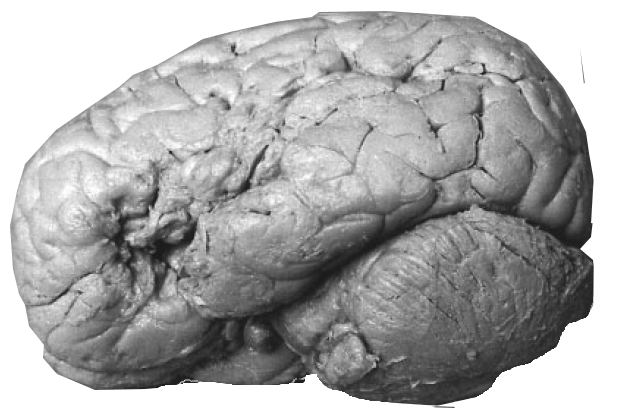This video from the archives of the University of Wisconsin at Madison Physiology department shows an interview with a patient with Broca's aphasia. The patient has great difficulty articulating sentences, and produces only isolated words and utterances. However, note that his utterances are "on topic", suggesting that he has little difficulty understanding the speech of his interviewer. This difficulty in articulation rather than comprehension has led to Broca's aphasia being described as a "motor aphasia".
Broca's aphasia is usually associated with lesions to Broca's area, an area of the prefrontal cortex which the French neurologist Paul Broca had found to be damaged in his very severely aphasic patient Mr Leborgne, nicknamed "Tan tan" because he was unable to utter anything other than "tan, tan, tan..." This image shows Mr Leborgne's brain, which is now preserved in a museum in Paris.

Although Broca's area is thought of as a motor aphasia, brain imaging studies suggest that this area is often also activated when we are listening to speech.
Here another, more recent video showing the teenage aphasia patient Sarah Scott. Note how Sarah sometimes uses written words to help herself. Nevertheless, it is not uncommon for Broca's aphasia patients to have difficulties producing written as well as spoken language.
